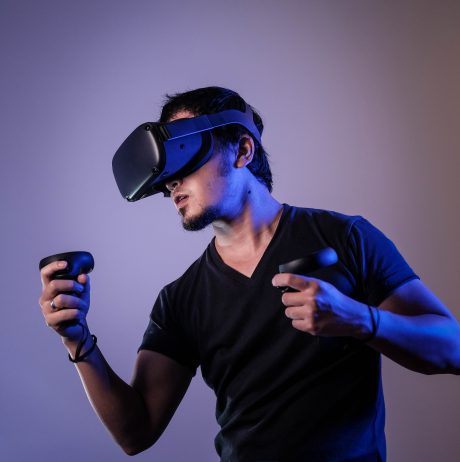3.1 Introduction to Module 3
 When we were designing this course, we found many teachers in vocational education and training were interested in how work was changing and what new skills would be needed in the future. But we also found that many teachers were also interested in how AI could be used for teaching and learning and what it might mean for the future of education. But the use of AI in education and training is a somewhat abstract idea and many asked us for examples.
When we were designing this course, we found many teachers in vocational education and training were interested in how work was changing and what new skills would be needed in the future. But we also found that many teachers were also interested in how AI could be used for teaching and learning and what it might mean for the future of education. But the use of AI in education and training is a somewhat abstract idea and many asked us for examples.
So that is the basis for this module. We explain some of the ways in which AI is being used for teaching and learning now and provide ideas how it might be used in the future. And we provide a series of different case studies drawing on existing practice and ranging from applications like Duolingo, which is the worlds most used language learning application, to case studies based in individual vocational schools
We are also aware that there are concerns about the ethical application of AI, and where relevant draw attention to reservations over its use.
The different units cover a wide range of potential use in education and training. Unit 3.2 looks at how AI can be used to support learner engagement and both intrinsic and extrinsic motivation. Although Artificial Intelligence won’t be able to replace the role of a tutor in the near future, it says, it can work with teachers to lighten the load as instructors take on the role of coaches instead of the role of information purveyors.
Unit 3.3 looks at how AI can support Learner Engagement and recruitment, providing examples of chatbots, one of which was found effective in reducing learner stress and anxiety during the Covid 19 pandemic.
Unit 3.4 provides a detailed case study of a chatbot called CiCi which has been developed in the UK to provide guidance and support to adults with low skills and qualifications seeking new career options.
In unit 3.5 the author provides his personal experience of using the AI powered language learning program, DuoLingo, to learn Spanish and discusses his feelings about gamification and personalized learning.
Unit 3.6 considers how AI can be used to create learning content, particularly focusing on Natural Language generation. AI can not only support a personalized learning experience but can modify and extend access to training programmes through recommender systems and speech to text applications and used together with Virtual Reality applications can allow learners to practice soft skills.
In Unit 3.9 Bernard Marr presents a video on how AI can improve teaching and learning. The aim, he says, is not to replace teachers but to make education a better experience. He talks about the emergence of a hybrid model of teachers and AI working together. With more time, teachers will be able to focus on creativity and exploration in class while the AI is able to provide differentiated and individual feedback
Unit 3.10 is a case study focused on assessment. AI can already provide grading and automatic feedback and guidance, thus reducing the teacher workload. AI technologies support open questions and sentence completion which can be used for formal assessment.
Unit 3.11 is also around a case study, this time looking at AI and Virtual Reality (VR). VR can be used, for example, when employees are to learn new process steps on industrial machines. By using VR glasses, learning can be hands-on and at the same time,the risk of errors (injuries or application errors) can be reduced. VR applications can also be used in the classroom to make learning content more tangible.
Recently, great strides have also been made to merge VR and AI into one form of technology.
The following case study in unit 3.12 is focused on Intelligent Tutoring Systems (ITS). Such systems can present content and improve the efficacy of learning systems. ITS can, amongst other things, store and represent information to reply to questions from students. The case study explains the model underpinning ITS including a Domain knowledge / expert model; a Student diagnosis model; a Pedagogic model and a user interface controlling interaction.
The next case study, unit 3.13, defines a smart classroom as a physical learning space equipped with wireless communication, digital devices, and sensor technology. Data collected via sensors, e.g. with microphones or cameras, is used by humans or AI systems to provide learning aids, tools, or strategies for learners. A smart classroom is designed to support teachers in the classroom to make learning more effective for students. The unit also draws attention to controversies over surveillance of learners.
Unit 3.14 is about Learning Analytics.
The final two units in this module are focused on AI and administration. Unit 3.15, How Can AI Reduce the Burden of Administration for Vocational Teachers and Trainers, says AI can be very effective in the provision of different assistance to students, such as informing, guiding and helping in time management (e.g., nudging in the execution of tasks according to schedule).
Unit 3.16 is a case study on administration looking at how AI can both support students while reducing the administrative load on teachers.
